CHAPTER SIX
The History of Electric Vehicles
Long before I started working as a writer and financial analyst, I was an electrical engineer. I spent nearly 25 years in the semiconductor industry. Even now, I love puttering around with new technologies and gizmos. Back in December 2011, we installed a 10-kilowatt (kW) ground-mounted solar array at our farm in Pennsylvania.
So getting an electric vehicle (EV) wasn't much of a stretch. It was the waiting game we had to play. When Nissan Motors announced it was developing an electric vehicle in 2009, I was all ears. After some research, I determined I had to have one. And why not? Nissan was having a bit of a problem moving its LEAFs out of inventory. So they offered a two-year lease that was $50 less a month than my wife was spending on gasoline to drive her Acura MDX back and forth to work. She was initially concerned with the 80 to 90 mile range, but it's only 15 miles from our house to the school where she teaches.
So we went to the Nissan dealer and ordered a LEAF. We took delivery of it in June 2013. When our lease was up, we called Nissan and asked if we could extend it for another year at the same price. They were happy to agree. For the three years we had the car, all we did was replace the wiper blades. That's it. No oil changes, brake jobs, muffler replacements, or any of the other dozens of things you have to worry about in a car with an internal combustion engine (ICE). And charging the LEAF's battery cost us between $20 and $30 per month. That's about half of what it cost to fill the MDX's tank. All my wife did was plug the car into its charging port on the garage wall. The car was programmed to do its charging between 11 p.m. and 5 a.m. We have a dual-rate meter and our electricity is cheaper at night. Fifteen minutes before my wife would leave for work, the car's temperature control system would turn on. It would heat or cool the car as necessary to get the interior temperature to 75°F. Doing this while still connected to the charging system avoided using any battery power.
Fast-forward to June 2016. We returned the LEAF to Nissan and took delivery of a brand new Tesla Model X SUV. Rather than lease the Model X, we decided to purchase the car. As of this writing, the car has performed flawlessly. It was back to the Tesla Service Center once to replace a faulty door sensor. The difference between the LEAF and the Model X is like the difference between a Cessna two-seat plane and an F-18 fighter jet. I could go on and on about the Tesla (and in a later chapter, I will).
But here's the point. It's not just my family hopping on the EV bandwagon. According to Bloomberg, EVs will account for 35 percent of all new vehicle sales by 2040.1 I think that could happen a decade earlier, by 2030. Remember, Fessler's Second Law of Technology states: “When it comes to technology, changes happen much faster than anyone expects.” EVs are clearly at a tipping point. They are poised to send ICE vehicles the way of the horse and buggy. Speaking of horse and buggies, let's take a look at the long, colorful history of the EV.
THE HISTORY OF SELF-PROPELLED VEHICLES
Throughout history, humans have been fascinated with speed. Before vehicles, a galloping horse was top-speed when it came to fast transportation. Historians believe that somewhere around the third millennium BCE, ancient Egyptian sailors harnessed the power of wind to sail their papyrus ships upstream against the Nile's current. Several millennia later, the Chinese followed the Egyptians with wind-propelled chariots in the sixth century AD.
Fast-forward 1,000 years and we have a vehicle of similar design, constructed by Flemish mathematician Simon Stevin (1548–1620)2 (see Figure 6.1). Stevin's wind chariot or land yacht (Zeilwagen) was built for the amusement of his friend Prince Maurice of Orange, in what is now the Netherlands. Maurice used it for racing along the sandy beaches between the villages of Petten and Scheveningen. Propelled only by the wind, Stevin's Zeilwagen reportedly could outrun horses.
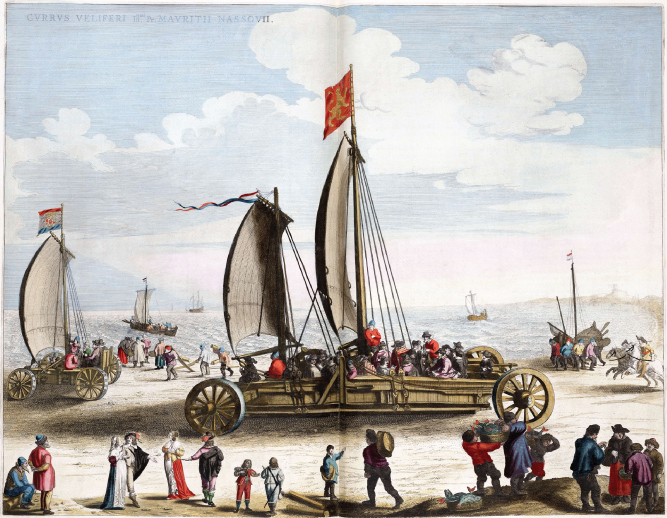
FIGURE 6.1 WIND CHARIOT OR LAND YACHT (ZEILWAGEN)
Data source: upload.wikimedia.org/wikipedia/commons/9/96/Simon_Stevins_zeilwagen_voor_Prins_Maurits_1649.jpg.
Even before Stevin constructed his land yacht, other Europeans were designing self-propelled vehicles. The Italians have a long history of car designs. An Italian physician, inventor, and engineer, Guido von Vigevano (1280–1349), designed windmill-powered battle cars, battle wagons, and siege engines3 such as the one seen in Figure 6.2.
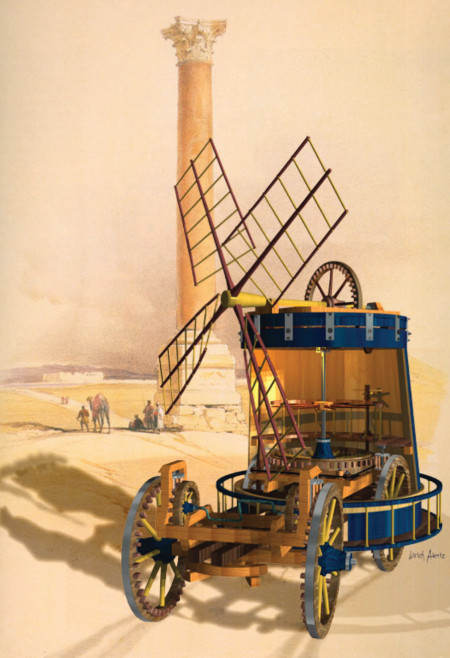
FIGURE 6.2 GUIDO VON VIGEVANO BATTLE CAR
Source: Courtesy of Ulrich Alertz.
The battle car used wind power that relayed wind force through gears to the vehicle's wheels. It was designed for King Phillip VI of France. He was planning a crusade using the vehicle, but it never happened. Some historians view this as the first self-propelled vehicle, or certainly the predecessor of it.
Fast-forward now to the 1440s, and we find the development of wound springs to power portable clocks. In 1478, Leonardo da Vinci (1452–1519) scaled up wound springs and used them in the design of a self-moving car or automobile for use on stages4 (see Figure 6.3). It is the first self-propelled, stored energy vehicle.
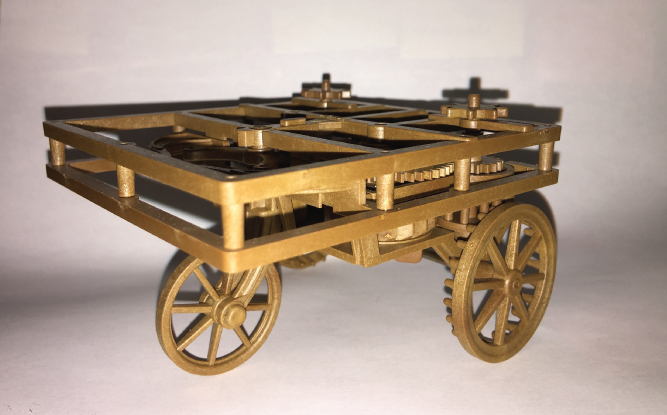
FIGURE 6.3 LEONARDO DA VINCI'S SPRING-POWERED STAGE CAR
Historians believe that Leonardo never constructed the vehicle during his lifetime. Perhaps others considered it too dangerous to operate, or the materials just weren't readily available to build it. Since then, engineers (your author among them) have constructed a number of working models. However, like many of Leonardo's inventions, his automobile was far ahead of its time and went nowhere else.
Yet another Italian engineer, Giovanni Branca (1571–1645), designed a steam turbine in 1624.5 That design was incorporated into a toy car designed by Ferdinand Verbiest (1623–1688), a Flemish Jesuit Missionary. Verbiest's design dates from 1672 while he was stationed in China.6 This was well before Thomas Newcomen (1664–1729) and James Watt (1736–1819) designed and built steam engines in 1712 and 1774, respectively.7
Not surprisingly, technological advancements in steam engines soon provided versions that could generate sufficient mechanical power. Engineers being who they are, steam-powered vehicles soon followed. A French army engineer officer, Nicholas-Joseph Cugnot (1725–1804), built a 7.25-meter long tricycle.8 This was used as a cannon transporter. The braking system was under-designed and the vehicle had stability issues. Higher performance was obtained by British engineer Richard Trevithick (1771–1833) in 1784.9 Trevithick's design used a high-pressure boiler that took advantage of recent developments in steam and steel technologies.
The first real internal combustion engine (ICE) was designed by Leonardo da Vinci. But it was the French-Swiss inventor François Isaac de Rivaz (1752–1828) who actually built one in 1807.10 The engine ran on a mixture of hydrogen and oxygen. In 1808, de Rivaz used it to power what would be the first ICE automobile. However, commercial success of de Rivaz's engine was not in the cards. The engine and his automobile remained one-of-a-kind inventions for decades.
How Ørsted's Big Discovery Changed the World
In 1820, an experiment undertaken by Danish chemist and physicist Hans Christian Ørsted (1777–1851) changed the world. It was the discovery of electromagnetism.11 Ørsted's experiment consisted of the simple deflection of a compass needle in the presence of an electrical current. It was the first time anyone observed the interaction of a magnetic and electrical field. As with steam, soon after Ørsted's discovery inventors and engineers of the time attempted to build electrically powered cars. The first rotating device powered by electricity was designed in 1822 by the English physicist and mathematician Peter Barlow (1776–1862).12 Known as Barlow's wheel, it was a crudely built, spiked disc that rotated in the presence of a magnetic field and an electrical current. His design was not suitable for translating motion of the disc into useful mechanical action. Stronger electrodynamic forces would be needed in order to build the first EV.
Enter German physicist Johann S. C. Schweigger (1779–1857). In 1820, Schweigger developed the first electric coil. The effect of a coil is to intensify or multiply electromagnetic forces. Five years later, English inventor and physicist William Sturgeon (1783–1850) wound the coil wire around an iron core, creating the first electromagnet. It was able to lift nine pounds. In 1828, Joseph Henry (1797–1878), an American scientist, was able to improve upon Sturgeon's coil by insulating the coil wires with silk and winding them tightly around the iron core. Henry's electromagnets could lift iron and steel bodies weighing up to one ton. Engineers and inventors finally had electromotive forces strong enough to make EVs.
The heart of any EV is its electric motor. It's what replaces the ICE in a conventional car. It also eliminates the need for a transmission, drive shaft, differential, and exhaust system components. As a result, modern EVs have a perfectly flat floor. The unsung designer of the first electric motor was a Slovak-Hungarian priest, Ányos Jedlik (1800–1895). In 1827, Jedlik began experiments with rudimentary motors. He called them lightning-magnetic self-rotors. In 1828, he constructed and demonstrated the very first electric motor (see Figure 6.4).
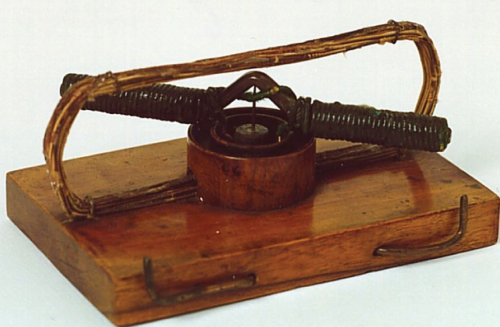
FIGURE 6.4 THE WORLD'S FIRST ELECTRIC MOTOR: ÁNYOS JEDLIK'S “LIGHTNING-MAGNETIC SELF-ROTOR”
Source: en.wikipedia.org/wiki/%C3%81nyos_Jedlik#/media/File:Jedlik_motor.jpg.
This direct current (DC) motor had a stator coil, a rotor, and commutator. The wire leads sticking out of the wood connect to the power source. Just one year later, Jedlik redesigned his motor to power a small toy electric car (see Figure 6.5).

FIGURE 6.5 JEDLIK'S ELECTRIC TOY CAR
Source: http://www.electricvehiclesnews.com/History/historyearlyII.htm.
In 1835, Professor Sibrandus Stratingh (1785–1841) of the University of Groningen in the Netherlands built a different version of a small-scale electric car13 (see Figure 6.6).
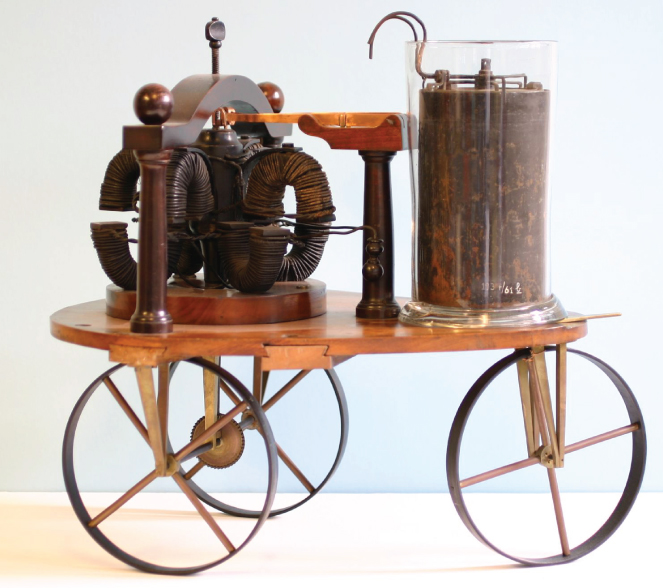
FIGURE 6.6 STRATINGH'S SMALL-SCALE ELECTRIC CAR
Source: Courtesy of University Museum Groningen. Reproduced with permission.
Finally, Robert Anderson of Scotland constructed a very crude electric carriage between 1832 and 1839.14
During the same period, inventors were experimenting with EVs on rails. The first toy electric locomotive was built by an American blacksmith and inventor. In 1831, Thomas Davenport (1802–1851) used a primitive electric motor he designed himself to power the toy.15 A Scottish inventor and entrepreneur, Robert Davidson (1804–1894), started his own experiments with electric motors in 1827. In 1842, Davidson took the wraps off the first, life-size electric locomotive, called the Galvani.16 The Edinburgh to Glasgow rail line tested it the same year. It reached a speed of four miles per hour with no passengers or freight on board. Like all other EVs of the time, the Galvani used disposable batteries. These batteries could only be used once before throwing them away.
Americans were experimenting during this period as well. Charles Grafton Page (1812–1868) made an electrically powered locomotive in 1851.17 Inventors soon realized that making the rails themselves conductive would allow the batteries to be housed in a stationary location. This technique was patented in 1840 in Great Britain and in 1847 in the United States.
Problems and Limitations
The electric vehicles I described above had several problems. The first was their motors. They weren't efficient or powerful enough to put in locomotives or cars for use in practical applications. Besides having motors with very primitive parts, the batteries of the time were one of three different electrochemical cell designs. The first was a depolarized cell developed in 1829 by Antoine-César Becquerel (1788–1878).18 The second was a zinc-platinum cell developed a year later by the Welsh chemist William R. Grove (1811–1896).19 In 1836, an English chemist and physicist, John Daniell (1790–1845), developed an improved double electrolyte depolarized cell.20 In 1841 a German chemist, Robert W. E. Bunsen (1811–1899), developed a cell in which he replaced the platinum electrode with one made of carbon.21
The problem with these cell designs was once their charge was exhausted, they had to be disposed of. This made for expensive energy sources. Calculations of the day showed the consumption of zinc batteries was 40 times more expensive (and a lot less convenient) than burning coal in steam engines. Remember, at this time in history steam railways were expanding like wildfire.
As a result of battery and electric motor power limitations, those early EVs never achieved commercial success. But they did run, and they were developed prior to ICE vehicles that made a dubious appearance in 1826. That's when the American inventor Samuel Morey (1762–1843) introduced the first ICE-powered car.22 They wouldn't see any further significant advances until 1863, with new motors designed by the Belgian engineer Étienne Lenoir (1822–1900).23
THE NINETEENTH-CENTURY EV DISRUPTION
In the second half of the nineteenth century, a number of achievements took place in Europe in both battery technology and dynamos (electromechanical generators). A number of additional technological advancements contributed to the development of a viable dynamo. One of the most notable was the creation of a solid iron rotor, developed in 1856 by Werner Siemens (1816–1892). This allowed for an increased excitation field that vastly increased the power produced.24 There were five or six other developments during the next decade. All of them, including Siemens's iron rotor, were merged together in 1869 by a Belgian electrician, Zénobe Gramme (1826–1901).25 The resulting generators were capable of producing virtually unlimited electrical power when driven by steam engines.
In parallel with the development of steam-powered generators, the French physicist Gaston Planté (1834–1889) developed the first rechargeable lead-acid battery in 1859.26 In 1881, the French chemist Camille Alphonse Faure (1840–1898) developed an improved version suitable for commercial use.27 Direct current (DC) motors were under development at the same time as generators. In 1873, Gramme demonstrated a reversible DC motor. Finally, all the pieces were in place to produce a practical, commercial EV.
In 1873, 31 years after Davidson constructed his electric locomotive, he built what is generally considered to be the first working EV. The problem was his design still used disposable iron/zinc batteries, making it unsuitable for large-scale production. The next attempt at an EV was in 1882, in the form of a light electric-powered tricycle. William E. Ayrton (1847–1908) and John Perry's (1850–1920) design used a 0.5 horsepower motor and 10 lead-acid cells designed by Planté.28 While it was operational, the excessive weight of the batteries limited its speed and made it commercially unviable. Two years later in 1884, a prominent British inventor, electrical engineer, and industrialist by the name of Thomas Parker (1843–1915) built the first successful EV29 (see Figure 6.7).

FIGURE 6.7 THOMAS PARKER'S ELECTRIC CAR
Source: https://commons.wikimedia.org/wiki/File:Thomas_Parker_Electric_car.jpg.
Parker's company, Elwell-Parker Limited, not only manufactured his EV, it also produced the rechargeable batteries. Parker's interest in electricity wasn't just limited to EVs. In 1890, Elwell-Parker Limited electrified the London Underground. It also installed overhead tramways on the line between Liverpool and Birmingham. In 1896, his company produced an electric bus.
After Parker's EV made its debut, a number of other vehicles followed in quick succession. In 1886, the Ward Electric Car Company, started by Radcliffe Ward (1859–?) developed an EV powered by 28 cells.30 It had a reasonable operating speed of 13 km/h. Ward's company went on to produce an electric bus and a van for the London Postal Service.
Just two years later, another British engineer, Magnus Volk (1851–1937) manufactured an electric tricycle, called Volk's Electrically Propelled Dog Cart31 (see Figure 6.8).

FIGURE 6.8 MAGNUS VOLK'S THREE-WHEELED EV
Source: https://commons.wikimedia.org/wiki/File:Magnus_Volk_on_his_electric_dog_cart,_1897.jpg.
Six batteries under the seats powered a motor that could drive the tricycle for six hours. Volk's Dog Cart could hit speeds of 8.7 mph on level terrain. Volk later became famous for building the very first electric railway. The Volks Electric Railway opened in August 1883, and today it still runs between Brighton and Hove. It is the oldest electric railroad in the world still in operation.
Also in 1888, Immisch and Company of London built a four-passenger dogcart. This was belt-driven by a motor designed by the company's founder, Moritz Immisch (1838–1903).32 Immisch entered into business with Volk to start the London Electric Cab Company in 1889. The cars had a fast exchange design for their 40 cells. However, the company only lasted two years, due once again to excessive battery weight and other technical issues.
England wasn't the only place that inventors and engineers were experimenting with early EVs. In 1881, at the first Paris Exposition Internationale d'Électricité, a French electrician named Gustave Trouvé (1839–1902) presented his electric tricycle powered by a Faure battery.33 At the same exposition, Charles Jeantaud (1843–1906) demonstrated an EV also using a Faure battery powering a Gramme motor.34 Jeantaud went on to produce EVs from 1893 to 1906.
In 1889, the Belgian gun maker Henri Pieper (1840–1898) constructed an electric carriage.35 Following in his father's footsteps, Henri's son Nicholas Pieper (1870–1933) built the very first hybrid-electric vehicle called the Auto-Mixte.36 The small gasoline motor was directly connected to a dynamo that could power the car or recharge the cells.
In 1893, the French inventor Paul Pouchain developed an electric carriage capable of transporting six passengers at speeds of 10 mph for distances of nearly 44 miles.37 Like most other EVs of the day, it was very heavy. Its 54 lead-acid cells helped the car attain a curb weight of 2,970 pounds.
In 1894, another Frenchman, Louis Antoine Kriéger (1868–1951), began to design and build EVs.38 Over the next four years, interest in EVs continued to grow in France. So Kriéger formed the Kriéger Company of Electric Vehicles. The company produced three models: the Brougham, the Electrolette, and the Landaulet pictured in Figure 6.9.

FIGURE 6.9 1905 KRIÉGER ELECTRIC LANDAULET
Source: Library of Congress, Harris & Ewing Photographs (rights and restrictions information: www.loc.gov/rr/print/res/140_harr.html); picture source: cdn.loc.gov/master/pnp/hec/16500/16598u.tif.
Kriéger's company produced 43 EVs in 1901 and 65 the following year. Not exactly mind-blowing volumes, but remember these vehicles were primarily being purchased by upper-class citizenry of means. One thing that's standard on today's EVs was a Kriéger invention: regenerative braking. That's when the car's electric motor is turned into a generator that recovers energy from the slowing down of the vehicle. This energy is transferred back into the battery cells.
Not surprisingly, once a number of different manufacturers started making EVs, companies agreed to race their vehicles to promote new models and features. This was particularly popular among French manufacturers. The first official land speed record was set by the French aristocrat Count Gaston de Chasseloup-Laubat (1867–1903).39 His blistering 39.23 mph record was on December 18, 1898, in an EV built by Jeantaud Duc. Not to be outdone, Gaston's rival, the Belgian driver Camille Jenatzy (1868–1913), broke Gaston's record just four months later.40 On April 29, 1899, Jenatzy drove a missile-shaped EV named Jamais Contente (Never Satisfied). His top speed was 65.79 mph. At the time, this was faster than even the fastest steam locomotive. The French elite's EV purchases soon made France the world's largest automobile maker. It would take until 1904 before the United States would surpass France.
The leading German electric company, Siemens & Halske, initially focused on electric public transportation. It presented the first electric, six-passenger tramway in 1879 at the Berlin Industrial Exhibition. It had DC motors designed in 1872 that received power from the rails. The company built the Gross-Lichterfelde Tramway, the first commercial application of its design in southwestern Berlin in 1881.41
As for late nineteenth-century automobiles, German engineers focused on ICE-powered versions. The first ICE prototype car was constructed by Siegfried Marcus (1831–1898) in 1870.42 Fifteen years later, Karl Friedrich Benz (1844–1929) built a car that was designed to use an ICE motor from the start.43 Benz's first effort was a three-wheel tricycle. A year later, Gottlieb Daimler (1834–1900) designed an ICE-powered bike. He then followed that with a four-wheel automobile in 1886.44
It wasn't until June 1898 that an Austrian engineer by the name of Ferdinand Porsche (1875–1951) built the first German EV.45 His car was code-named P1. Like many early EVs, it was a glorified carriage that developed three horsepower. It had 12 different speed ranges, a cruising speed of 15 mph and a maximum speed of 21 mph. Its overall range was up to 49 miles on a single charge. The P1 participated in a 24-mile, all-electric race in Berlin in September 1899. Ferdinand, with three passengers aboard the P1, won by a gap of 18 minutes. Ferdinand's second EV was called the Lohner-Porsche, and it turned heads when it was exhibited at the 1900 Paris World Exhibition. The car had front wheel hub motors, an innovation designed by Porsche. Porsche went on to design a gasoline/electric hybrid EV in 1900. The Semper Vivus combined his hub motors with two gasoline combustion engines.
US EVs appeared later than their European counterparts. The first American to develop an EV was Andrew L. Riker (1868–1930).46 In 1884, at the ripe old age of 16, he made an electric bike by adding a battery and electric motor to a bicycle. He formed the Riker Electric Motor Company in 1888 and a year later, he started the Riker Motor Vehicle Company in Elizabeth, New Jersey, to build electric cars.
The Electric Vehicle Company was founded on September 27, 1897, by Isaac Rice (1850–1915).47 Rice formed it as a holding company of early battery-powered EV manufacturers. Rice's first acquisition was in May 1897 when he acquired the Electric Carriage and Wagon Company in New York. Rice then acquired Riker's company in 1901.
The Electric Carriage and Wagon Company's EV was designed in 1894 by Henry G. Morris, a mechanical engineer, and Pedro G. Salom, a chemist. Both had previous experience building battery streetcars. When that business started to decline, they decided to design an EV. They patented the Electrobat on August 31, 1894.48 The vehicle had steel wheels. These were necessary to support the weight of the 1,600-pound lead-acid battery. They started production of the Electrobat in 1895. A year later, the two inventors founded the Morris and Salom Electric Carriage and Wagon Company.
Later versions of the Electrobat had pneumatic tires and lighter 900-pound batteries. The Electrobat had rear wheel steering and two 1.5 horsepower motors. The Electrobat could travel up to 25 miles on a single charge at an average speed of 20 mph. In 1897, Morris and Salom had a fleet of 13 Electrobats in use in Manhattan as taxicabs. It was the first fleet of taxis in the United States. Once Rice acquired the company, he built an additional 87 Electrobats to serve the Manhattan public. The cabs were a sensation. When the Electrobat's battery charge started to run low, the driver could pull into any one of 10 service stations located around Manhattan. A hydraulic lift removed the spent battery assembly and quickly replaced it with a fresh one. Cabs were back out on the street in a few minutes.
Another early EV, able to seat four, was developed in 1888 by William Morrison (1850–1927).49 Morrison developed the car in secret in Des Moines, Iowa. It amazed thousands at its first appearance during the Seni Om Sed Parade in fall 1888. The car had a 4-horsepower motor, used front wheel drive, and had steel-rimmed wagon-wheel-like tires. It had a top speed of 20 mph. Morrison then went on to develop a six-passenger EV (see Figure 6.10).

FIGURE 6.10 1890 MORRISON ELECTRIC CARRIAGE
Source: Iowa Department of Cultural Affairs, Special Collections Department.
This EV used 24 battery cells that were under the front seat. The batteries were designed and produced by Morrison and each cell weighed 32 pounds. Connected together, they produced 112 amperes of current at 58 volts. They were rechargeable, but took 10 hours to recharge. The US Patent Office issued Morrison's company more than 20 patents associated with electric storage batteries. This car had a 100-mile range, not bad for its time. Morrison patented his EV in 1891. He relocated to Chicago where he sold his company to the American Battery Company. The EV made an appearance at the 1893 World's Columbian Exposition in Chicago to much acclaim.
The 1880s saw the spread of Thomas Edison's electricity networks. This early electrical infrastructure was vital to EV owners who had to be able to recharge their battery cells. The Exposition in Chicago marked the success of the EV and of electricity in the United States. The next two decades saw the early EV market start to take off. One of the leading bicycle manufacturers, the Pope Manufacturing Company, was founded by Albert Augustus Pope (1843–1909) in 1876 and developed and marketed an EV in 1896.50 By 1899, Pope had produced more than 500 EVs. That year the Electric Vehicle division was spun-off into an independent company called the Columbia Automobile Company, which by the end of 1899 was also acquired by the aforementioned Electric Vehicle Company. By this time, the EV market was heating up. Many EV companies formed in order to participate in the market. These included: Waverly; Rauch & Lang; Bailey; Woods; Chapman; Columbia; Detroit; Anderson; and Studebaker.
EVs eventually caught the interest of Thomas Edison (1847–1931). In 1899, he started using EVs to test new storage battery designs.51 Between 1900 and 1910, Edison developed and perfected the nickel-iron alkaline storage battery. Edison's battery was far more rugged than the lead-acid batteries of the day. Another big advantage of Edison's batteries was their ability to handle more charge/discharge cycles than lead-acid versions. What's more, the repeated cycling of the battery didn't degrade its performance. Edison claimed his batteries would last 100 years, and recent testing of some of his original batteries have validated his claims.52 He formed the Edison Storage Battery Company in New Jersey on May 27, 1901. It produced batteries for EVs, mining lamps, submarines, and other uses.
Edison was no stranger to EVs, and owned some of the top-of-the-line models in production.53 Figure 6.11 shows Edison holding up the hood of a Baker and Detroit Electric EV in order to show off its new Edison nickel-iron battery cells. In 1903, Edison decided to employ electric motors and his new batteries in the conversion of four large touring cars to EVs. That same year, Henry Ford (1863–1947) founded the Ford Motor Company. His sole intention was to mass-produce a gasoline-powered automobile.54 His engineers even developed a flywheel magneto system avoiding the need for a battery.

FIGURE 6.11 EDISON SHOWING OFF HIS NICKEL-IRON BATTERIES
Source: https://en.wikipedia.org/wiki/File:EdisonElectricCar1913.jpg#filehistory.
By 1910, there were three established types of automobiles in the United States. Steam-powered cars accounted for about 40 percent of the market. They were fast and powerful, but had lengthy startup times of 25 to 45 minutes. A fire had to be lit in order to boil water to make steam. They were limited to short-range driving, as they required frequent water tank refills. In addition, they were difficult to operate, and usually had a dedicated driver. Gasoline-powered cars had reached 22 percent of the market. Initial models were noisy, difficult to operate, and notoriously unreliable.
EVs held a comfortable 38 percent of the market. Like today's EVs, they were easy to start, anyone could drive them, and they were odorless and silent. Many EV manufacturers marketed them to women. Their drawbacks were cost. They were more expensive than gasoline-powered cars, in some cases costing twice as much. In addition, they were slow, with average speeds of 20 or so mph. Finally, most had a limited range of 50 miles or less before their cells needed recharging or replacing.
By the turn of the twentieth century, streets were starting to be paved in major cities in continental Europe. Great Britain had started paving 30 years earlier, as had the United States. Most early EVs ended up in the driveways of well-to-do city dwellers. They could afford to pay the higher prices for the luxuriously appointed EVs. Even Henry Ford owned three Detroit Electric EVs for himself and his family. His wife, Clara Ford, drove a 1914 model.55 John Davison Rockefeller was another famous EV owner. By 1912, the production of early EVs had hit its peak.
What caused their demise? Several factors. While Thomas Edison's nickel-iron cell worked well in early EVs, it was still limited in range. Gasoline-powered cars were far less expensive (one-third to one-sixth the cost of an EV) and they were manufactured on assembly lines, which greatly improved their reliability. What's more, paved highways between cities started to appear in the early 1920s. Gasoline-powered cars had the extended range to be able to make longer drives. Finally, the discovery of large reserves of crude oil in California, Texas, and Oklahoma sent gasoline prices plunging. That brought the operating cost of gasoline-powered cars well below that of EVs. While initial gasoline-powered cars had to be hand-cranked to start, electric starters found their way into the American car market in 1912. By the mid-1920s early EVs had all but disappeared from American and European roads and streets. They would remain on the sideline of American transportation for about half a century.
